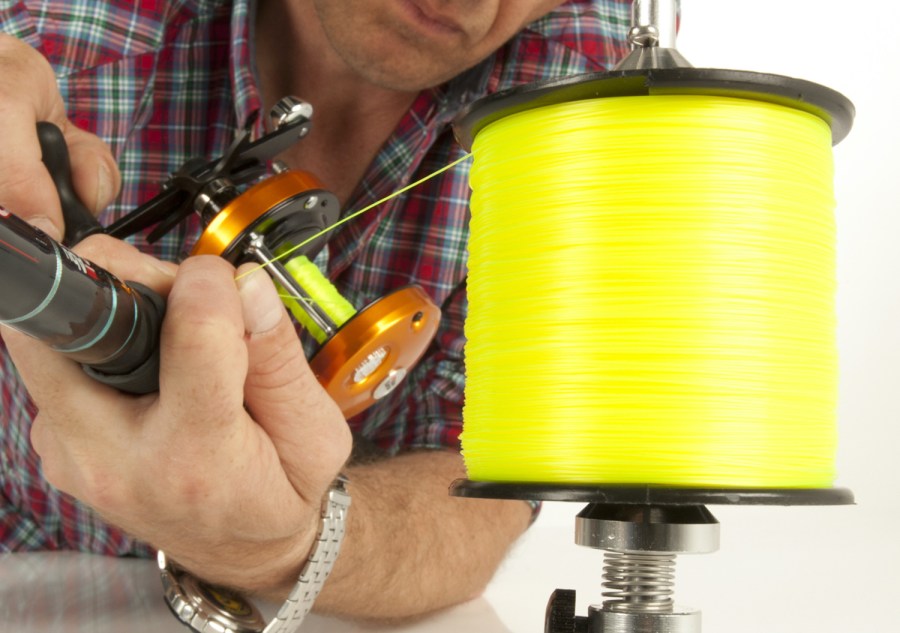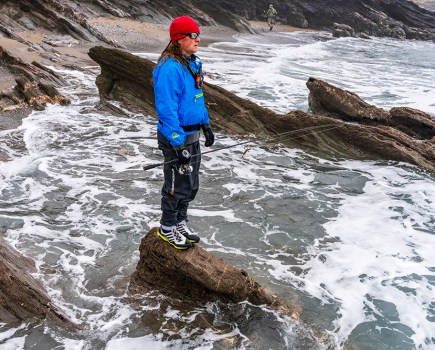Get this sea angling basic right and you’ll nip many casting problems in the bud
On a perfectly loaded reel, line will flow evenly off the spool during the cast. An overloaded spool will spill off too much line and cause an overrun, while an under-loaded spool will drag the lead back.
Line choice is often based on breaking strain, but those quoted can be fanciful and difficult to trust. There are no such problems with diameter, which is easy to check with a micrometer. It is diameter that dictates the amount of line a spool will hold.
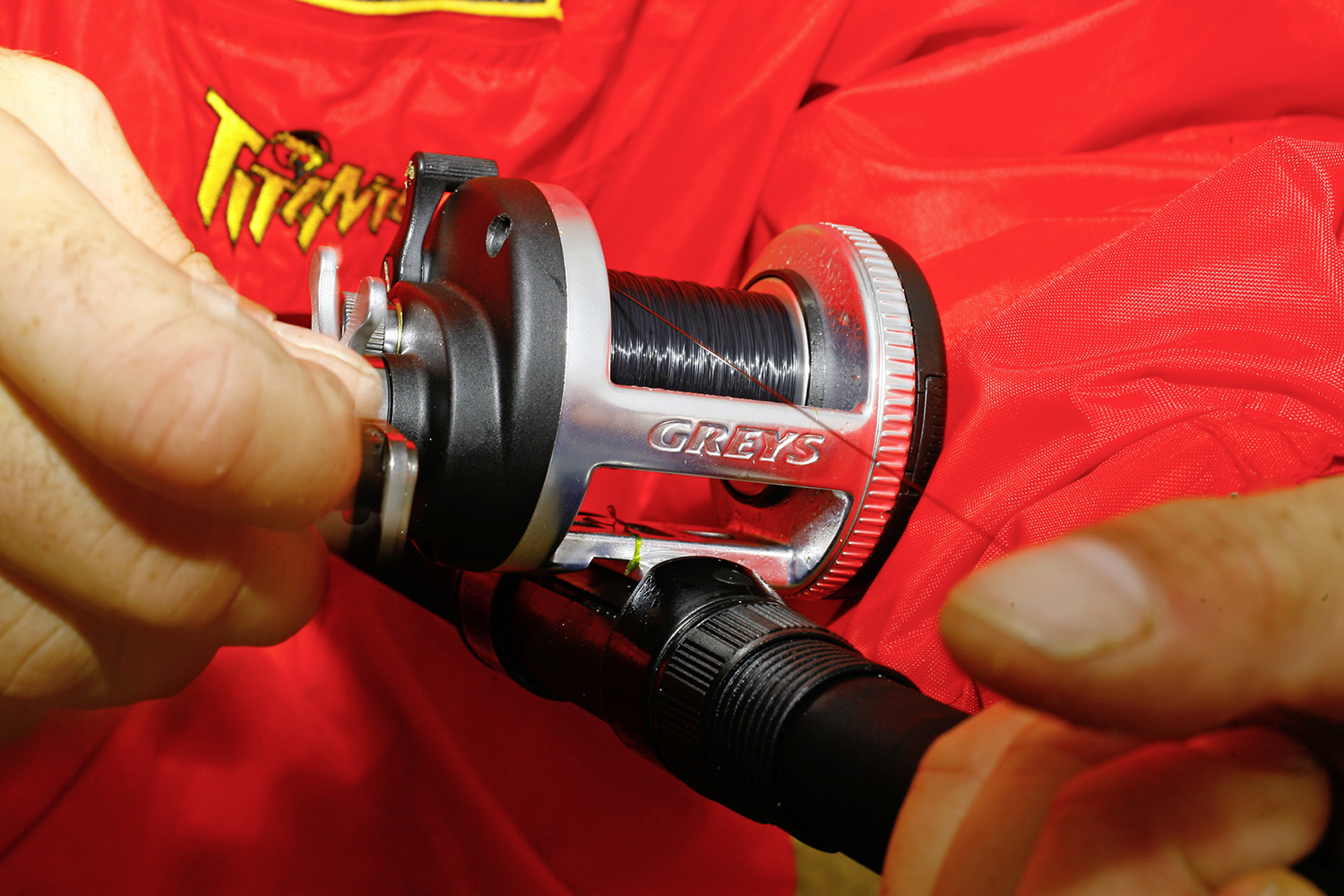
TENSION
Reeling line on to a spool slackly or with uneven tension is probably the biggest cause of tangles and overruns.
With a fixed-spool reel the line can be held and tensioned by the forefinger and thumb of the hand that holds the rod above the reel. In most cases the weight of the lead alone will tension the line as you reel in, but not after a snap-off, when it has to be done carefully by hand.
On a multiplier, line can be tensioned and guided along the spool by the forefinger and thumb of the hand that supports the reel at its seat. Any slack sections or loops run the risk of a potential birdsnest during the next cast.
In essence, never reel line on to a spool without tensioning it!
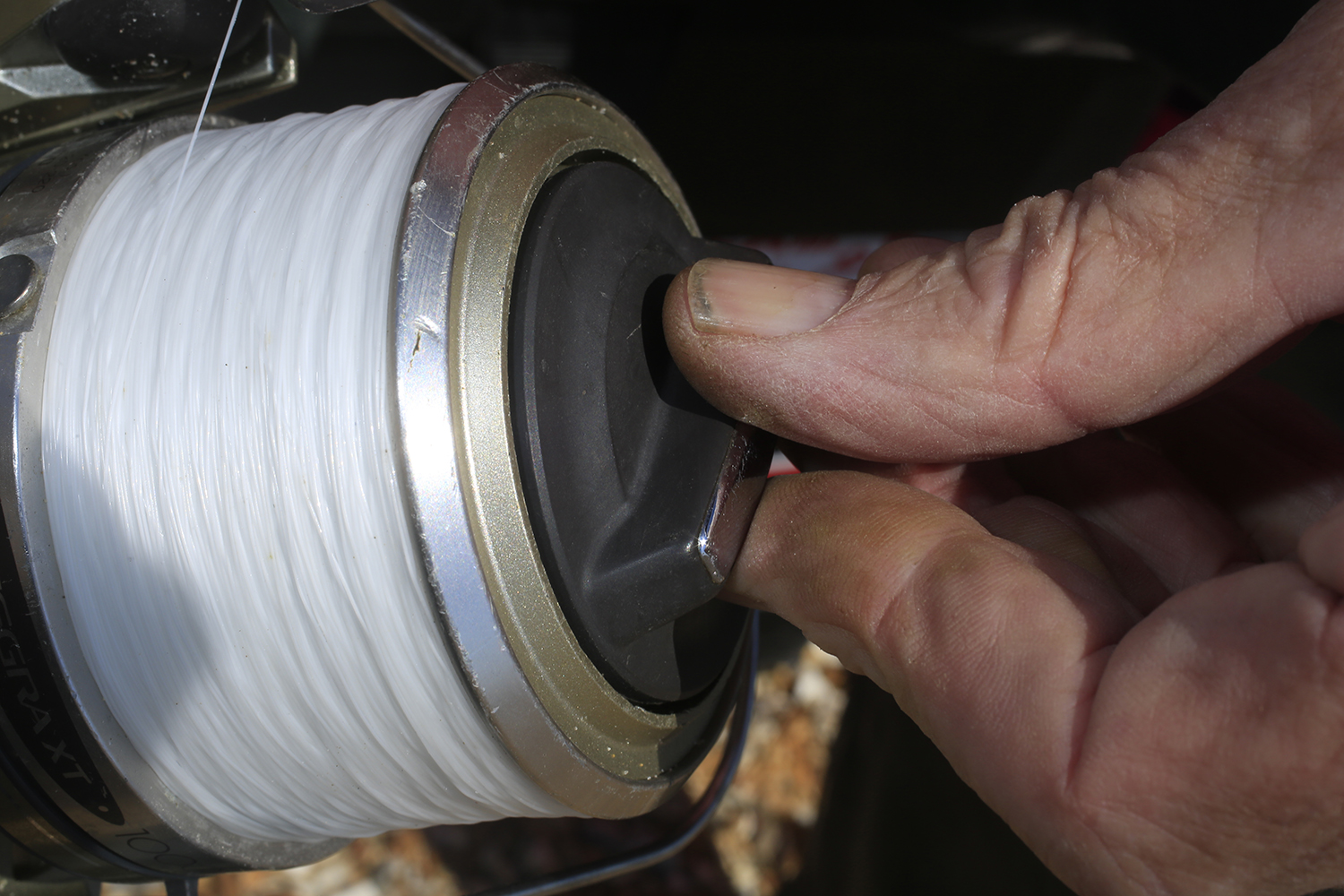
LOADING A FIXED SPOOL
With any kind of reel, line must be loaded on to the spool without it twisting. Otherwise, in the case of a fixed-spool reel, loops and twists will be stored up and come off on the cast, causing all sorts of problems.
Watch the line as it comes off the spool it is sold on, and if it is twisting, change the way you are unloading it. You can either allow it to rotate on a pencil pushed through the hole in the middle of the spool (braking it with a finger), or hold the spool on one side and let the line come off in loops. If it twists, turn the spool over so the line exits from the other side.
Anchor the line on the reel spool with either a grinner knot or a simple lasso knot. Should the line ever bottom out from the attentions of a big fish you are less likely to lose the lot. In both cases a wrap of PVC tape over the knot will smooth it down. Tape also makes good backing, and that way you won’t need so much line to fill the reel spool.
Load the spool so the line comes as close to the lip as possible. Some modern fixed-spool reels have a low-capacity spool for micro braids and low-diameter mono. The better quality fixed-spool reels have an efficient line lay system whereby the spool oscillates as it turns, laying the line on in cotton reel fashion. Some reels even contour the line so that it forms a cone shape on the spool, layering it perfectly for smooth, efficient distance casting.
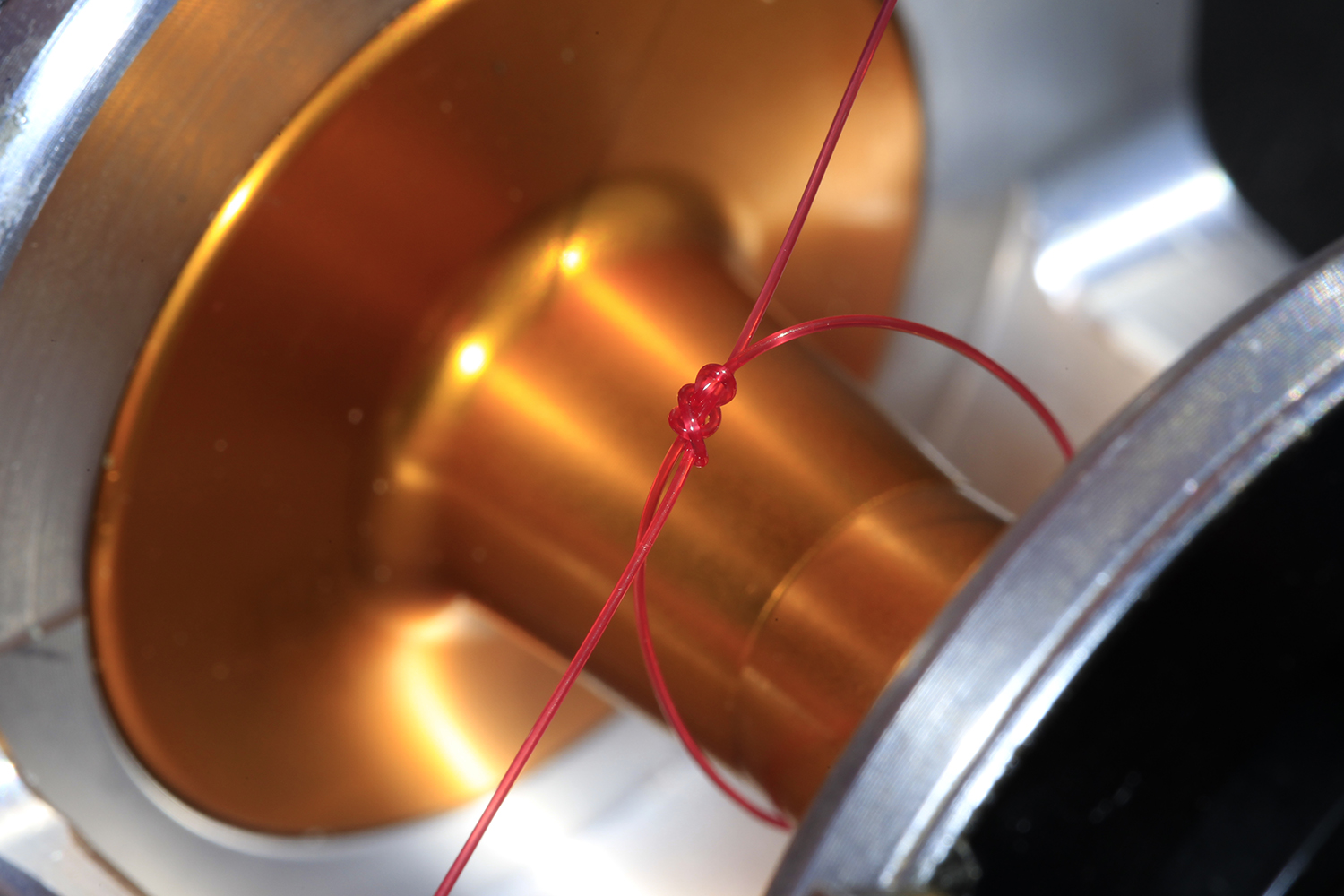
LOADING A MULTIPLIER
A multiplier can usually be loaded straight from a spool of line rotating on a pencil. Take your time to achieve an even lay. The grinner knot is again the choice to anchor the line on the spool. Some anglers like to profile the line on the spool with a mound in the centre – this is said to balance the spool better. However, any lumps and bumps low down will transfer to the top layer of the line and cause casting problems.
Load a multiplier to its best working capacity, not to the very lip of the spool. A beginner should under-load the spool slightly, while an accomplished caster can load those few extra yards his skills can cope with.
An under-loaded multiplier is well suited to casting into the wind in rough weather.
TOP TIPS
1 Bulk spools (4oz upwards) are economical and offer multiple fills of your reel – exactly how many depends on the spool capacity.
2 One advantage of buying a more expensive line is that it will be loaded with attention to the problems of twist. Modern copolymer mono lines are increasingly resistant to twist and memory.
3 Reels with ready-loaded spools are aimed at the beginner and the choice of line on the spool may not be ideal – great for a holiday mackerel outfit but not much else.
4 Never use a line with a knot in it. Apart from the knot edges posing a threat to fingers, a knot creates a bump in the line lay that can disrupt casting smoothness.
5 A fixed-spool reel with a quick-change spool system gives the option of carrying several different lines to suit the type of fishing you are doing. This is not possible with a multiplier.
6 Colouring line is said to weaken it very slightly, although in some makes the bright colours are reckoned to be the best. Red is a favourite because it is said to be invisible under water.

